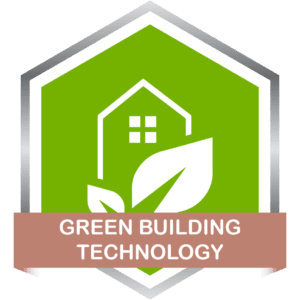About Course
Location and Transportation – Green Building Technology
Explore the LEED v4 BD+C and ID+C Location & Transportation credits. These credits enable project teams to make use of the infrastructure features in existing communities that are beneficial to both human and environmental health. In addition to that, an overview of the innovation credits, regional priority credits, and integrative process credits will be presented during this session. This course addresses all of the prerequisites as well as each credit in a credit-by-credit approach, giving the technical requirements as well as tactics that are effective in meeting them.
The Location and Transportation category looks at how the proposed development will affect nearby buildings, properties, neighborhoods, and the city as a whole.
LEED v4 makes it hard for project teams to keep up with the latest technical requirements and implementation strategies. This course will take you step-by-step through each of the credits for the Location and Transportation category for the LEED v4 ID+C Rating Systems. Save your project time, money, and frustration by expanding your current knowledge of the LEED requirements, referenced standards, related credits, and implementation strategies. You will analyse real-world scenarios, technologies, case studies, and calculations as they illustrate best practises.
The Location and Transportation – Green Building Technology training programme explores the LEED v4 Location and Transportation credits, which encourage project teams to take advantage of the infrastructure elements in existing communities that provide environmental and human health benefits.
The practise questions were prepared by Krishnaji Pawar, CEO and founder of Beyond Smart Cities.
specialises in developing sustainable design strategies for Green Building Certification Systems (LEED, GSAS, ACP, ISO 14001:2015, etc.), Energy Management, Energy Efficiency, Energy Audit, Building Commissioning, Environmental Impact Assessment, and Environmental Management Systems.
Key Learning Objectives
- Consider the advantages of existing infrastructure supporting the project site.
- Know how important it is to get LT credits early on and what your options are after site selection.
- Recognize the importance of pursuing LT credits early and options available after site selection
- Recognize synergies between multiple credits
- Recognize how credit requirements lead to higher performing buildings and market transformation
Who this course is for:
- People seeking an in-depth understanding of the Location and Transportation or Urban Connectivity categories in the LEED rating systems
- Sustainability managers, sustainability engineers, facility and business managers, industrial engineers, supply chain professionals, utility officials, consultants, contractors, financial officers, and people who work for energy service companies become more aware of and skilled at finding and putting into action the best strategies for a sustainable site.
- Architects, urban planners, and landscape professionals
- For students who need a deeper insight into sustainable sites with respect to LEED
- Looking to gain employment in sustainability or green building development? This sector is booming.
In this course, we will address the significance of the building’s location, as well as its transportation features, and the effects these factors have on the design of environmentally friendly buildings. The location of a green building project should first promote smart growth, which is an approach that protects undeveloped lands and contributes to developments in projects that are located near jobs, schools, shops, and other diverse uses.
Smart growth refers to the concept that green building projects should first and foremost promote smart growth. An illustration of this would be a residential development that is situated extremely close to the central business district and that also features a number of different public transportation alternatives.
Location and Transportation evolved from Sustainable Sites. With LEED’s latest version, Location and Transportation focused on the building’s community and infrastructure, while Sustainable Sites focused on the site’s ecology. Location and Transportation encourages building owners to leverage existing infrastructure and hardscape to reduce environmental impact. Location and Transportation might reduce one-quarter of worldwide energy-related greenhouse gas emissions from the transportation sector.
Course Content
Section 1: Introduction and Course Outline
-
09:08
-
L1. Introduction and Course Outline Handout
Section 2: Location and Transportation
Section 3: LEED for Neighborhood Development Location
Section 4: Sensitive Land Protection
Section 5: High-Priority Site and Equitable Development
Section 6: Surrounding Density and Diverse Uses
Section 7: Access to Quality Transit
Section 8: Bicycle Facilities
Section 9: Reduced Parking Footprint
Section 10: Electric Vehicles
Section 11: Summary and Resources
Student Ratings & Reviews


